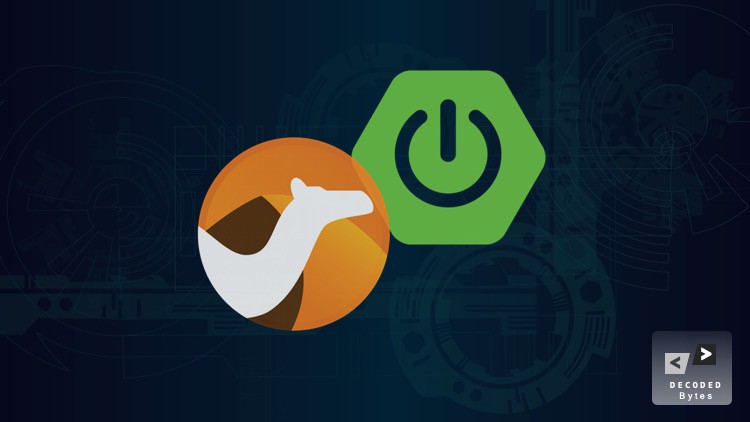Apache Camel with Springboot Masterclass
Apache Camel can be learned with Spring boot.
What you’ll learn
Apache Camel with Springboot Masterclass
- Learn how to use Apache Camel.
- Use Apache Camel to build and test integrations by putting fake endpoints in place of the real ones.
- By using Apache Camel JPA with Hibernate, you can keep data.
- Learn how to use different Camel components for different integrations.
- Learn how Camel works inside. You’ll learn about routes, endpoints, exchanges, and more.
- In Apache Camel, how to deal with exceptions.
- Camel’s components are covered: Timer, File, REST, JPA, ActiveMQ, and so on. This is a list of the Camel components.
- CSV and JSON are two of the data formats that Camel can read and write.
- Camel Languages – Bean, File, Simple, Headers, Tokenize.
- This is Camel Spring on June, 5.
- Messages, router, dynamic router, endpoints, converter, pub-sub, splitter, multicast, choice, mapper, Log, wireTap are some of the things in EIP.
Requirements
-
This class is mostly for programmers who already know how to use Core Java, Spring Boot, and understand the basics of REST, JPA, Hibernate, Messaging, Junits, and Exception Handling.
Description
It has been around for more than a decade now, with active development still in the works.
This course is by no means attempting to provide a full-scope coverage of what Apache Camel has to offer
But we cover a lot of ground here. By the end of this course, you would have looked at all significant aspects of Enterprise Application development like design, legacy-system migration, exception handling, logging, database management, etc.
This course is designed as a hands-on exercise where the expectation is for you to build along to understand property-based behaviour changes with Camel better.
We will be starting by building a legacy file-based data transfer application and then migrating this to a REST-based API to collect data. Distribution of this data would then be done using messaging buses like ActiveMQ.
The course is structured so that almost all lectures start with theoretical concepts followed by hands-on development.
A couple of mid-section exercises will firm your understanding of the concepts.
Who this course is for:
- For programmers who work in the Integration Domain.
- The developers and teams who want to move old applications to a modern stack.
- For developers and architects to learn about the basics of Apache Camel, like how to use it.










